
Discover the Most Popular Succulents: Names and Care Tips
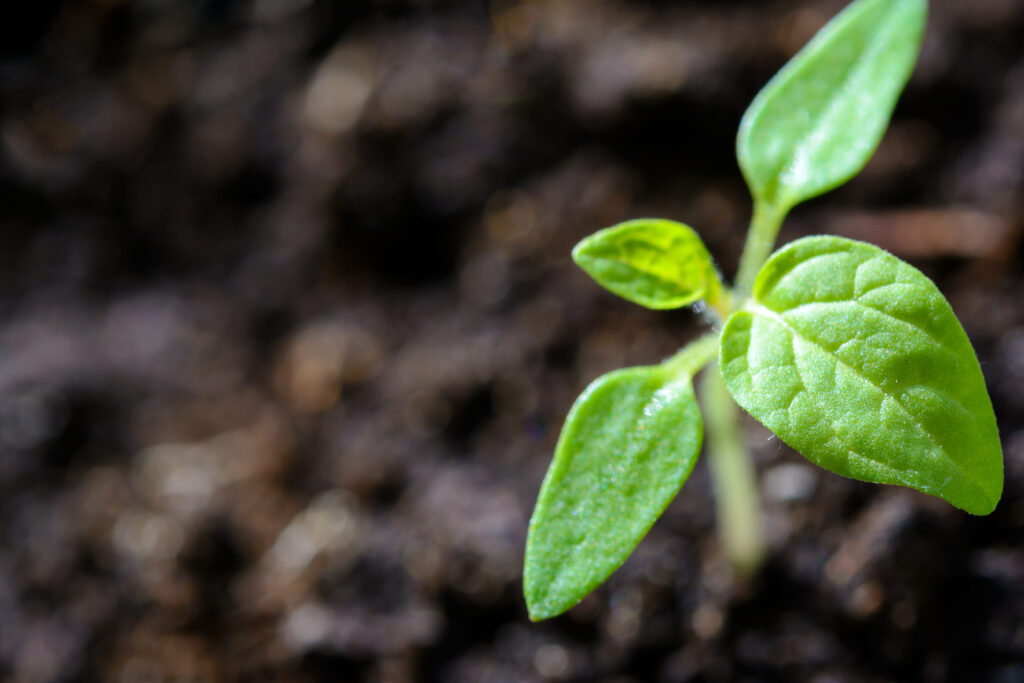
Succulents have become increasingly popular in recent years, both as indoor and outdoor plants. Their unique and beautiful shapes, as well as their ability to thrive in various environments with minimal care, have made them a favorite among plant enthusiasts. Succulents are known for their fleshy leaves and stems that store moisture, allowing them to survive in arid conditions. With a vast array of colors, sizes, and textures, succulents have captured the attention of people around the world.
We will delve into the world of succulents and explore some of the most popular varieties. From the iconic Jade Plant to the trendy String of Pearls, we will provide information on their names, characteristics, and care tips. We will discuss the ideal growing conditions, watering requirements, and the necessary steps for propagation. Whether you are a seasoned succulent collector or a beginner looking to add some greenery to your home, this article will serve as a comprehensive guide to help you choose, care for, and enjoy these fascinating plants.
- Find a variety of popular succulents by researching online or visiting local nurseries
- Some popular succulents include Echeveria, Aloe Vera, and Jade Plant
- Take note of the specific care requirements for each succulent, such as watering frequency and sunlight needs
- Provide your succulents with well-draining soil to prevent root rot
- Place your succulents in a location with bright, indirect sunlight
- Water your succulents sparingly, allowing the soil to dry out between waterings
- Use a balanced fertilizer specifically formulated for succulents to promote healthy growth
- Avoid overwatering your succulents, as this can lead to root rot and other issues
- Keep an eye out for signs of pests, such as mealybugs or scale insects, and treat them promptly
- Enjoy the beauty and variety of succulents while adding a touch of nature to your home or garden
- Frequently Asked Questions
Find a variety of popular succulents by researching online or visiting local nurseries
If you are interested in adding some popular succulents to your collection, there are a few ways to get started. One option is to do some online research to find out which succulents are currently trending. You can visit websites and blogs dedicated to succulent enthusiasts, as well as social media platforms like Instagram and Pinterest, where you can find stunning photos and helpful tips from fellow succulent lovers.
Another option is to visit local nurseries and garden centers. They often have a wide variety of succulents available, and you can see them in person before making a purchase. Plus, nursery staff can provide valuable advice on care and maintenance specific to each succulent variety.
Below, we have compiled a list of some of the most popular succulents along with their names and care tips. Whether you are a beginner or an experienced succulent enthusiast, these plants are sure to add beauty to your collection.
1. Echeveria
The Echeveria is a classic succulent known for its rosette-shaped leaves that come in various colors like green, pink, purple, and blue. They prefer bright, indirect sunlight and well-draining soil. Allow the soil to dry out between watering to prevent root rot.
2. Aloe Vera
The Aloe Vera is a popular succulent known for its medicinal properties. It has thick, spiky leaves that contain a gel-like substance. Aloe Vera thrives in bright, indirect sunlight and well-draining soil. Water the plant deeply but infrequently, allowing the soil to completely dry out before watering again.
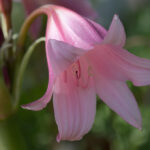 Discover the Stunning Succulents with Bell-Shaped Flowers
Discover the Stunning Succulents with Bell-Shaped Flowers3. Sedum
Sedum, also known as Stonecrop, is a versatile succulent that comes in a variety of shapes, sizes, and colors. They prefer full sunlight and well-draining soil. Sedums are drought-tolerant plants, so make sure to water them sparingly.
4. Haworthia
Haworthia is a small succulent with thick, fleshy leaves that form in a rosette shape. They are native to South Africa and prefer bright, indirect sunlight. Haworthias are drought-tolerant, so it's best to water them sparingly and allow the soil to dry out between watering.
5. Crassula
Crassula, also known as Jade Plant, is a popular succulent with thick, glossy leaves. They prefer bright, indirect sunlight and well-draining soil. Crassulas are easy to care for and require infrequent watering. Overwatering can lead to root rot, so it's important to let the soil dry out between watering.
- Care Tips for Popular Succulents:
- Provide bright, indirect sunlight
- Use well-draining soil to prevent root rot
- Water sparingly and allow the soil to dry out between watering
- Protect succulents from extreme temperatures
- Fertilize sparingly, as succulents do not require much nutrients
With these popular succulents and their care tips, you can start creating a beautiful and thriving succulent collection. Remember to observe each succulent's specific needs and adjust your care routine accordingly. Happy succulent gardening!
Some popular succulents include Echeveria, Aloe Vera, and Jade Plant
Succulents have become increasingly popular in recent years due to their unique beauty and ease of care. Among the wide variety of succulents available, there are a few that stand out as the most popular choices for plant enthusiasts. Let's take a closer look at three of the most popular succulents: Echeveria, Aloe Vera, and Jade Plant.
Echeveria
Echeveria is a genus of succulents that features rosette-shaped leaves in stunning colors such as blue, purple, and pink. These plants are known for their compact size and attractive foliage patterns. Echeverias are perfect for adding a touch of elegance to any indoor or outdoor space.
To care for Echeverias, make sure they are planted in well-draining soil and placed in an area that receives bright, indirect sunlight. Water them sparingly, allowing the soil to dry out between waterings. Remember to protect them from frost during colder months.
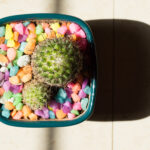 Discover the Diverse Varieties of Succulent Plants Available
Discover the Diverse Varieties of Succulent Plants AvailableAloe Vera
Aloe Vera is a succulent that not only adds beauty to your space but also offers a range of medicinal benefits. This plant features thick, fleshy leaves with serrated edges. Known for its healing properties, Aloe Vera is commonly used to treat minor burns and skin irritations.
To care for Aloe Vera, plant it in well-draining soil and place it in a spot with ample sunlight. Water the plant deeply but infrequently, allowing the soil to dry out completely before the next watering. Aloe Vera is a hardy plant that can tolerate some neglect, making it a great choice for beginners.
Jade Plant
Jade Plant, also known as Crassula ovata, is a popular succulent that is often associated with good luck and prosperity. It features thick, shiny leaves that resemble small, green coins. Jade Plants can grow into impressive, tree-like forms over time.
To care for Jade Plants, plant them in well-draining soil and place them in a location that receives bright, indirect sunlight. Water the plant thoroughly, allowing the soil to dry out slightly between waterings. Jade Plants are relatively low-maintenance and can thrive in various conditions.
These are just a few examples of the most popular succulents available. Each of these plants has its own unique characteristics and care requirements. Whether you're a seasoned succulent enthusiast or a beginner looking to add some greenery to your space, these popular succulents are sure to delight.
Take note of the specific care requirements for each succulent, such as watering frequency and sunlight needs
When it comes to caring for succulents, it's important to understand that each variety has its own specific needs. While they are known for their ability to thrive in dry conditions, it's still essential to provide them with the proper care to ensure their health and longevity.
 Discover Native African Succulents: Diverse & Hardy Garden Species!
Discover Native African Succulents: Diverse & Hardy Garden Species!1. Echeveria
Echeverias are one of the most popular types of succulents due to their rosette-shaped leaves and vibrant colors. They prefer bright, indirect sunlight and well-draining soil. Water them thoroughly but allow the soil to dry out before watering again.
2. Aloe Vera
Aloe Vera plants are not only renowned for their medicinal properties but also for their beauty. They require bright, indirect sunlight and well-draining soil. Water them deeply but allow the soil to dry out completely between waterings.
3. Haworthia
Haworthias are small, low-growing succulents with unique patterns on their leaves. They thrive in bright, indirect sunlight and well-draining soil. Water them sparingly, as too much water can lead to rot.
4. Jade Plant
Jade plants, also known as Crassula ovata, are prized for their thick, fleshy leaves and tree-like appearance. They prefer bright, indirect sunlight and well-draining soil. Water them thoroughly but allow the soil to dry out between waterings.
5. Sedum
Sedums are a diverse group of succulents that come in various shapes, sizes, and colors. They thrive in bright, direct sunlight and well-draining soil. Water them deeply but allow the soil to dry out between waterings.
- Provide adequate sunlight for your succulents
- Use well-draining soil specifically formulated for succulents
- Water thoroughly but avoid overwatering
- Allow the soil to dry out between waterings
- Monitor for pests and diseases regularly
By following these care tips and taking note of the specific requirements for each succulent, you can ensure that your plants thrive and bring beauty to your home or garden.
Provide your succulents with well-draining soil to prevent root rot
Succulents are a popular choice for many plant enthusiasts due to their unique and vibrant appearance. These hardy plants have the ability to store water in their leaves, stems, and roots, making them well-suited for dry and arid conditions. However, in order to keep your succulents healthy and thriving, it is crucial to provide them with the right type of soil.
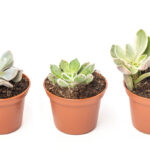 Low-Maintenance Succulents: Finding the Least Demanding Varieties
Low-Maintenance Succulents: Finding the Least Demanding VarietiesWell-draining soil is essential for succulents as it helps prevent root rot, a common problem that occurs when the roots are exposed to excess moisture for prolonged periods. To create the ideal soil mix, you can combine equal parts of potting soil, coarse sand, and perlite or pumice. This mixture allows for proper drainage while still retaining enough moisture for the succulents to thrive.
Choosing the right container for your succulents
When it comes to selecting a container for your succulents, it is important to consider both functionality and aesthetics. A container with drainage holes is crucial as it allows excess water to escape, preventing waterlogged soil and potential root rot. Additionally, choosing a container with a shallow depth is beneficial as it mimics the natural habitat of succulents, where they grow in shallow soil layers.
Furthermore, the material of the container can play a role in the well-being of your succulents. Clay or terracotta pots are often recommended as they are porous and allow for better airflow to the roots. However, if you opt for a non-porous container such as ceramic or glass, be mindful of watering frequency as the soil may take longer to dry out.
Watering tips for succulents
- Water sparingly: Succulents have adapted to survive in arid conditions, so they do not require frequent watering. Allow the soil to dry out completely between waterings.
- Water at the base: To prevent water from sitting on the leaves, which can lead to rot, it's best to water the soil directly at the base of the plant.
- Observe the signs: Pay attention to the appearance of your succulents. If the leaves appear plump and firm, it's a sign that they have enough water. If the leaves become wrinkled or shriveled, it's time to water.
By following these care tips, you can ensure that your succulents thrive in their environment and continue to bring beauty and joy to your space.
Place your succulents in a location with bright, indirect sunlight
Succulents are known for their ability to thrive in bright, indirect sunlight. Placing your succulents in a location with ample light is crucial for their growth and overall health. However, it is important to note that direct sunlight can be too harsh for these plants and may cause sunburn or damage to their leaves.
Choosing the right spot for your succulents
When selecting a spot for your succulents, look for a place that receives bright, indirect sunlight throughout the day. This can be near a south or east-facing window, or even outdoors in a shaded area. If you're keeping your succulents indoors, make sure they are not placed too close to a window with direct sunlight, as the intense rays can scorch their leaves.
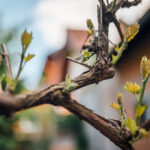 Discover Diverse Succulents with Branching Growth Patterns
Discover Diverse Succulents with Branching Growth PatternsProviding adequate light for indoor succulents
If you're growing succulents indoors, you might need to supplement their light requirements. In addition to natural light, you can use artificial grow lights to provide the necessary brightness. LED grow lights are a popular choice among succulent enthusiasts as they emit a balanced spectrum of light, promoting healthy growth.
Rotating your succulents
To ensure even growth and prevent your succulents from leaning towards the light source, it's recommended to rotate them every few weeks. This will encourage the plants to grow upright and prevent one side from receiving more sunlight than the other.
Monitoring sunlight exposure
Keep an eye on your succulents and observe how they react to the amount of sunlight they receive. If you notice signs of sunburn, such as brown or discolored patches on the leaves, it's an indication that they are receiving too much direct sunlight. On the other hand, if your succulents start stretching or leaning towards the light, it may be a sign that they are not getting enough brightness.
Remember, finding the right balance of sunlight for your succulents is key to their overall well-being. By providing them with bright, indirect sunlight and monitoring their exposure, you'll be on your way to keeping your succulents happy and thriving!
Water your succulents sparingly, allowing the soil to dry out between waterings
When it comes to succulent care, one of the most important things to keep in mind is to water them sparingly. Succulents are known for their ability to store water in their leaves and stems, which means they are more tolerant to drought conditions. Overwatering can lead to root rot and other issues, so it's best to let the soil dry out between waterings.
How often should you water your succulents?
The frequency of watering your succulents will depend on various factors such as the climate, the type of succulent, and the potting mix used. As a general rule of thumb, water your succulents only when the top inch of the soil feels dry. This can be once every 1-2 weeks, but it's always best to check the moisture level of the soil before watering.
What is the best way to water succulents?
When watering your succulents, it's important to do so in a way that allows the water to reach the roots without leaving the soil overly wet. Use a watering can or a small spouted container to target the base of the plant, avoiding getting water on the leaves as much as possible. Let the water soak into the soil and drain out of the pot completely.
 Discover the Stunning Succulent Plants with Rainbow-Colored Leaves
Discover the Stunning Succulent Plants with Rainbow-Colored LeavesWhat are the signs of overwatered succulents?
Overwatering can be detrimental to succulents, causing their leaves to become mushy and translucent. If you notice that your succulent's leaves are yellowing, wilting, or falling off easily, it could be a sign of overwatering. In such cases, it's crucial to adjust your watering routine and allow the soil to dry out before watering again.
What are the signs of underwatered succulents?
On the other hand, underwatered succulents will display signs such as shriveled leaves, a wrinkled appearance, or a wilted overall look. If you notice these symptoms, it's time to water your succulents. However, remember to water them sparingly and ensure the soil has proper drainage to avoid waterlogging.
Additional tips for succulent care:
- Provide adequate sunlight: Succulents thrive in bright light conditions, so make sure to place them near a sunny window or provide them with at least 4-6 hours of sunlight each day.
- Use well-draining soil: Succulents prefer soil that drains well to prevent water from sitting around their roots. You can either purchase a specialized succulent potting mix or create your own by mixing regular potting soil with sand or perlite.
- Avoid over-fertilizing: Succulents have low nutritional requirements, so fertilize them sparingly. Use a balanced, diluted succulent fertilizer during the growing season, following the instructions on the packaging.
- Keep an eye out for pests: Common succulent pests include mealybugs and aphids. Regularly inspect your plants for any signs of infestation and take appropriate measures to eradicate them.
- Rotate your succulents: To ensure even growth, rotate your succulents every few weeks to expose all sides to sunlight. This will prevent them from leaning towards one direction.
By following these care tips, you can ensure that your succulents thrive and remain healthy for a long time. Remember, each succulent may have slightly different care requirements, so it's always a good idea to research specific care instructions for the varieties you own.
Use a balanced fertilizer specifically formulated for succulents to promote healthy growth
Succulents have gained immense popularity in recent years due to their unique and eye-catching appearance. These versatile and low-maintenance plants are known for their ability to store water in their leaves and stems, making them perfect for those who may not have a green thumb.
While succulents are generally easy to care for, providing them with the right nutrients is crucial for their overall health and growth. One of the essential aspects of succulent care is using a balanced fertilizer specifically formulated for these plants.
Here are some reasons why using a suitable fertilizer is important:
 Exploring the Diversity: Succulents in Mixed Genus Categories
Exploring the Diversity: Succulents in Mixed Genus Categories- Promotes healthy growth: Succulents require a specific balance of nutrients to thrive. Using a fertilizer formulated for succulents ensures that they receive the necessary nutrients in the right proportions, promoting healthy growth.
- Prevents nutrient deficiencies: Succulents grown in nutrient-deficient soil may exhibit signs of stunted growth, pale leaves, or discoloration. A balanced fertilizer helps prevent nutrient deficiencies, ensuring that your succulents stay vibrant and healthy.
- Enhances drought tolerance: Succulents are adapted to survive in arid conditions, and using a suitable fertilizer can help enhance their ability to withstand drought. A well-fed succulent will have a stronger root system, allowing it to absorb and store water more efficiently.
- Improves overall plant health: Regularly feeding your succulents with the right fertilizer can boost their immune system and make them more resistant to pests and diseases. It also promotes better flowering and increased resilience to environmental stressors.
When choosing a fertilizer for your succulents, opt for a slow-release or time-release formula. This ensures a steady supply of nutrients over an extended period, reducing the risk of over-fertilization.
Remember to follow the instructions provided by the manufacturer and avoid over-fertilizing your succulents, as this can lead to nutrient burn or root damage. Always observe your plants and adjust the fertilization routine as needed.
By providing your succulents with the right fertilizer, you are giving them the best chance to thrive and showcase their stunning beauty.
Avoid overwatering your succulents, as this can lead to root rot and other issues
When it comes to caring for succulents, one of the most important things to remember is to avoid overwatering them. Succulents are adapted to survive in dry conditions, and their roots are prone to rot if they sit in water for too long. This can lead to a variety of issues, including wilting, yellowing leaves, and even the death of the plant.
To prevent overwatering, it's crucial to understand the water needs of different succulent varieties. Some succulents, like the Aloe Vera and Echeveria, prefer a little more moisture, while others, like the Haworthia and Sedum, thrive in drier conditions. Research the specific needs of the succulents you have, and adjust your watering schedule accordingly.
When watering your succulents, it's best to use the "soak and dry" method. This means thoroughly watering the soil until it drains out from the bottom of the pot, and then allowing the soil to dry out completely before watering again. This mimics the natural rainfall patterns in their native habitats and helps prevent waterlogging of the roots.
Another essential aspect of succulent care is choosing the right type of soil. Succulents require well-draining soil to prevent water from sitting around their roots. A good succulent soil mix typically consists of a combination of potting soil, perlite, and coarse sand or pumice. This mixture allows excess water to flow through easily, reducing the risk of root rot.
 Exploring the Possibility: Can Succulents Really Have Black Flowers?
Exploring the Possibility: Can Succulents Really Have Black Flowers?Additionally, it's essential to provide adequate sunlight for your succulents. Most succulents thrive in bright, indirect light, although the specific light requirements may vary between different species. Place your succulents near a sunny window or provide them with artificial grow lights to ensure they receive enough light for proper growth.
Avoiding overwatering, using well-draining soil, and providing adequate sunlight are key factors in successfully caring for your succulents. By following these tips, you can help your succulents thrive and enjoy their beautiful and unique forms in your home or garden.
Keep an eye out for signs of pests, such as mealybugs or scale insects, and treat them promptly
Pests can be a common issue when it comes to succulents. Mealybugs and scale insects are two of the most common pests that can infest your plants. It is important to keep an eye out for any signs of these pests and take immediate action to prevent them from spreading and causing damage.
Mealybugs are small, white, cotton-like insects that can often be found on the leaves, stems, and roots of succulents. They feed on plant sap, weakening the plant and causing stunted growth. If you notice a white, powdery substance on your succulent or tiny, cotton-like insects, you may have a mealybug infestation.
Scale insects, on the other hand, are small, oval-shaped pests that attach themselves to the succulent's leaves and stems. They can be either brown or black in color and may appear as small bumps or scales. Scale insects also feed on plant sap and can cause yellowing of leaves, leaf drop, and overall decline in the health of the succulent.
To treat mealybugs or scale insects, you can start by isolating the affected succulent to prevent the infestation from spreading to other plants. You can then use a cotton swab dipped in rubbing alcohol to remove the pests manually. Alternatively, there are also organic insecticidal soaps or neem oil sprays available that can effectively control these pests.
 Unveiling the Leafy Secrets of Succulents: Exploring Their Diversity
Unveiling the Leafy Secrets of Succulents: Exploring Their DiversityRegularly inspecting your succulents for signs of pests and taking prompt action can help ensure the health and well-being of your plants. Remember to check both the upper and lower surfaces of the leaves, as well as the stems and roots, to catch any infestations early.
Key Takeaways:
- Mealybugs and scale insects are common pests that can infest succulents.
- Mealybugs appear as white, cotton-like insects, while scale insects are small, oval-shaped and can be brown or black.
- Both pests feed on plant sap and can cause damage to the succulent if left untreated.
- To treat an infestation, isolate the affected succulent and manually remove the pests with rubbing alcohol or use organic insecticidal soaps or neem oil sprays.
- Regularly inspect your succulents to catch any signs of infestation early.
By staying vigilant and taking proper care of your succulents, you can prevent and treat pest infestations, ensuring that your plants thrive and stay healthy for years to come.
Enjoy the beauty and variety of succulents while adding a touch of nature to your home or garden
Succulents have gained immense popularity in recent years, and it's not hard to see why. With their unique shapes, vibrant colors, and ability to thrive in various environments, succulents have become a favorite among plant enthusiasts and beginners alike.
If you're looking to start your own succulent collection or simply want to learn more about these captivating plants, we've got you covered. In this article, we'll introduce you to some of the most popular succulents, along with essential care tips to help you keep them healthy and thriving.
1. Echeveria
Echeverias are a diverse genus of succulents known for their rosette-shaped leaves and stunning colors. From the powdery blue Echeveria glauca to the vibrant pink Echeveria 'Perle von Nurnberg,' there's a wide range of Echeveria varieties to choose from. These plants prefer bright, indirect light and well-draining soil. Remember to water them thoroughly but allow the soil to dry out between waterings to prevent root rot.
 Best Low-Light Cactus & Succulents for Indoor Spaces
Best Low-Light Cactus & Succulents for Indoor Spaces2. Sedum
Sedums, also known as stonecrops, are hardy succulents that come in various shapes and sizes. They are perfect for both indoor and outdoor settings. Sedum varieties such as Sedum morganianum (Burro's Tail) and Sedum rubrotinctum (Jelly Bean Succulent) are popular for their trailing growth habit and low-maintenance nature. These plants prefer bright light and well-draining soil. Water them sparingly, allowing the soil to dry out completely before the next watering.
3. Aloe Vera
Aloe vera is not only a popular succulent but also a versatile plant with numerous health benefits. Known for its gel-filled leaves, Aloe vera is commonly used for treating burns and soothing skin irritations. This succulent thrives in bright, indirect light and well-draining soil. Water it deeply but infrequently, allowing the soil to dry out between waterings.
4. Haworthia
Haworthias are small succulents characterized by their rosette-shaped leaves with intricate patterns and textures. They are perfect for indoor gardening due to their compact size and low light requirements. Haworthia varieties like Haworthia fasciata (Zebra Plant) and Haworthia cooperi (Window Haworthia) are popular choices. These plants prefer bright, indirect light and well-draining soil. Water them sparingly, allowing the soil to dry out between waterings.
5. Crassula
Crassulas, commonly known as jade plants, are iconic succulents with fleshy, oval-shaped leaves. They are often associated with good luck and prosperity. Crassula ovata (Money Tree) and Crassula argentea (Silver Jade Plant) are well-known varieties. These plants thrive in bright light and well-draining soil. Allow the soil to dry out between waterings, and be cautious not to overwater as it can lead to root rot.
By incorporating these popular succulents into your indoor or outdoor space, you can create a visually appealing and low-maintenance plant collection. Remember to provide them with the right amount of light, well-draining soil, and water them appropriately. With a little care, these succulents will bring natural beauty and tranquility to your surroundings.
So, why wait? Start your succulent journey today and discover the endless possibilities that these fascinating plants have to offer.
Frequently Asked Questions
1. What are some popular types of succulents?
Some popular types of succulents include Echeveria, Aloe Vera, Jade Plant, and Snake Plant.
2. How often should I water my succulents?
Succulents generally require watering once every 1-2 weeks, allowing the soil to dry out completely between waterings.
3. Can succulents be planted in regular potting soil?
No, it is recommended to use a well-draining succulent soil mix to prevent root rot. Regular potting soil retains too much moisture.
4. Do succulents need direct sunlight?
Most succulents thrive in bright indirect sunlight, although some varieties may tolerate direct sunlight for a few hours each day.
If you want to read more articles similar to Discover the Most Popular Succulents: Names and Care Tips, you can visit the Varieties and Colors category.

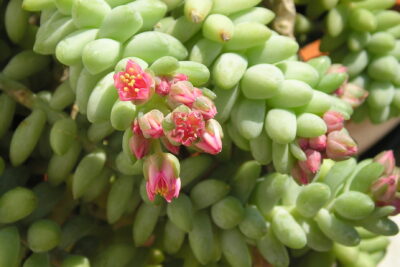




You Must Read